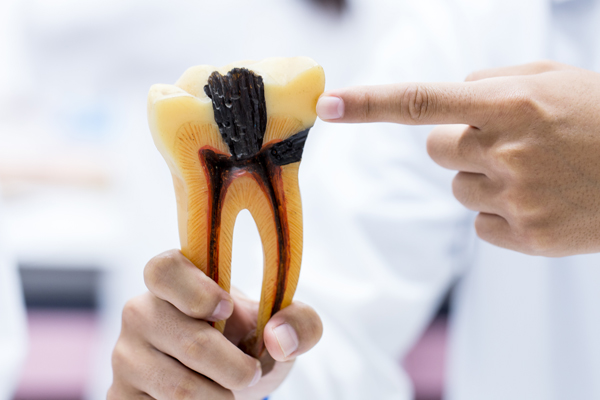A Step-by-Step Guide to the Root Canal Procedure

A root canal is a dental procedure designed to treat infection or damage within the pulp of a tooth. It is often necessary when decay or trauma affects the tooth's inner structure, leading to pain, swelling, or sensitivity. By addressing the problem at its source, a root canal helps preserve the natural tooth and avoid the need for extraction.
Why a root canal is needed
The pulp is the soft tissue inside the tooth that contains nerves and blood vessels. When bacteria enter through deep decay, a crack, or repeated dental procedures, the pulp can become inflamed or infected. If left untreated, this can lead to abscesses, severe pain, or bone loss around the root. A root canal removes the infected pulp, cleans the canal system, and seals the space to protect the tooth.
Initial diagnosis and consultation
The process begins with a thorough evaluation. The dentist or endodontist examines the tooth and surrounding tissues, often using digital X-rays to assess the extent of damage. Diagnostic testing may include checking the tooth's response to temperature or pressure. If the pulp is determined to be compromised, a root canal may be recommended to save the tooth.
Step 1: Local anesthesia and preparation
To ensure comfort during the procedure, local anesthesia is administered around the affected tooth. Once numb, the dentist isolates the tooth using a rubber dam to keep it clean and dry throughout the treatment. This barrier also prevents saliva or bacteria from entering the treatment area.
Step 2: Accessing the pulp chamber
Using a small dental drill, the dentist creates an opening in the top of the tooth to reach the pulp chamber. This access point allows for complete visibility and precision when removing infected or damaged tissue. Special tools called endodontic files remove the pulp and shape the canals for cleaning.
Step 3: Cleaning and disinfecting the canals
Each root canal is carefully cleaned to remove any remaining tissue, bacteria, or debris. An antibacterial solution helps disinfect the inside of the canals. This step is crucial in preventing future infections and ensuring the tooth is thoroughly sterilized before sealing.
Step 4: Filling the canal system
Once cleaned and shaped, the root canal is filled with a biocompatible material called gutta-percha. This rubber-like substance seals the canal and prevents bacteria from re-entering. A temporary filling is usually placed over the access point to protect the tooth until the final restoration is completed.
Step 5: Restoring the tooth
After a root canal, the dentist can restore the tooth to full function and appearance. In most cases, a crown is necessary to cover and protect the tooth from fracture or reinfection. The final restoration is typically completed in a separate appointment once the tooth has had time to heal.
Recovery and follow-up care
Mild discomfort or sensitivity may be present for a few days following the procedure. Over-the-counter medications are generally sufficient for managing temporary soreness. Patients should avoid chewing on the treated tooth until the permanent crown is in place. Good oral hygiene and regular dental visits are essential for long-term success.
Benefits of a root canal
Undergoing a root canal offers several important advantages for preserving dental health and maintaining long-term oral function, including:
- Preserves the natural tooth structure
- Relieves pain caused by infection or inflammation
- Prevents the spread of infection to surrounding teeth or tissue
- Supports normal biting and chewing function
Root canals have a high success rate and are often the preferred treatment when compared to tooth extraction. By retaining the original tooth, patients maintain proper alignment, bone support, and appearance. Additionally, they may avoid more invasive and costly procedures such as tooth extraction and replacement.
When to consider a root canal
Persistent tooth pain, sensitivity to hot or cold, swelling near the gums, and discoloration of a tooth are all possible signs that a root canal may be necessary. Early intervention can prevent further complications and reduce the risk of losing the tooth. A prompt dental evaluation ensures timely treatment and improved outcomes.
Saving teeth with precision and care
A root canal is a routine and effective procedure that helps preserve natural teeth, relieve discomfort, and restore oral health. With modern techniques and advanced tools, treatment is both safe and comfortable. Consulting with a dentist or endodontist helps enable early diagnosis and expert care when root canal therapy is necessary. For more information or to schedule a consultation, call Bliss Dental at {{PHONE}}.
To schedule a consultation, request an appointment on our website at https://blissdentalmiami.com or call Bliss Dental at (305) 564-2530 for an appointment in our Kendall office.
Check out what others are saying about our dental services on Yelp: Root Canal Treatment in Kendall, FL.
Related Posts
Root canal therapy is a routine procedure often recommended by a patient's dentist to treat infected teeth. Your tooth consists of various components that preserve its function. The root canal is the hollow section of your tooth that contains blood vessels, nerve tissue, and other cells, called the pulp. Your pulp nourishes your tooth and…
Dental emergencies can happen unexpectedly and lead to severe discomfort. When faced with sudden oral pain, injury, or infection, you should seek immediate care from an emergency dentist. The following framework outlines the typical processes and considerations you can expect from emergency dental care.An emergency dentist specializes in providing immediate dental care for unexpected issues…
When accidents happen that affect the mouth and teeth, most people visit an emergency dentist to have a broken or missing tooth repaired; however, these dentists are also capable of handling problems that stem from periodontal issues. While gum disease usually progresses slowly, it can cause emergency situations, and knowing when to visit a clinic…
Dental veneers may be the most effective option to repair uneven, misshapen, or broken teeth. They can also help reduce gaps in the teeth. Traditional veneers come in two main types: porcelain and composite resin. While both can help you achieve that movie-star smile, they have some differences. This article will explore both porcelain and…

